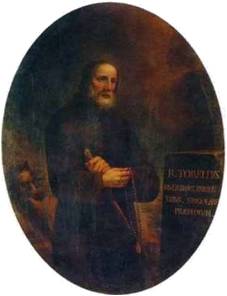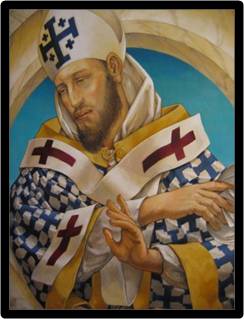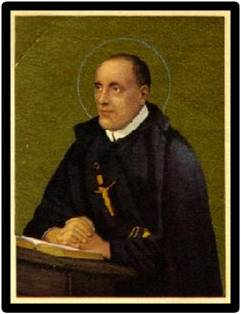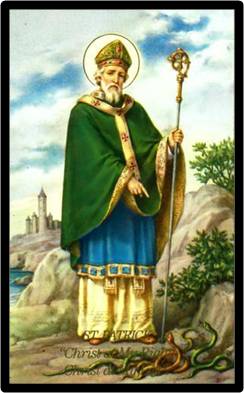
Torello was born at Poppi, Tuscany in Italy. His life as a child in the village was ordinary and normal. But after his father’s death, he was left with a small fortune and made the wrong kind of friends. They were boys who drank and wasted their time instead of working. Torello liked his new friends and tried hard to please them.
Then while he was playing sport one day, a rooster flew down from its roost. It landed on Torello’s arm and crowed three times, long and loud. Torello was speechless and walked away without finishing the game. He knew he was being warned, just as St. Peter had once been warned that his foolish way of life was leading him away from Jesus.
Torello made up his mind then and there to change his life. He went to see the abbot of San Fedele who helped him make a good confession. Then Torello went out to a quiet place in the forest and chose a spot near a big tree where he spent eight days in prayer. At the end of that time he decided that he would be a hermit.
He went back to Poppi and sold all his property. He kept only enough money to buy the small square plot of land around the big tree he had found in the woods. Next to that tree he built a little shack where he spent the rest of his life. He grew his own vegetables for food and got water from the stream. He prayed and performed penances, the hardest of which was sleeping only three hours a night.
Being a hermit Torello felt close to God and he spent fifty years of his life in peace with God. While he was alive, only one friend knew of Torello’s hidden life as a hermit in the forest. Blessed Torello died at the age of eighty in 1282.

St. Cyril was raised in Jerusalem when a new kind of life was beginning for Christians. Before that time, the Church was tortured by the emperors. Thousands of Christians had been martyrs and died for their faith in Christ.
In 315, Emperor Constantine declared Christianity as a legal religion. That was a wonderful thing, but it didn’t end all the problems. In fact, during the years that followed Christians faced a new problem.
There was confusion about what Christians believe and don’t believe. There were many false teachings called “heresies.” Some priests and bishops became brave defenders of Church teaching. One such bishop was Cyril of Jerusalem.
When St. Maximus, bishop of Jerusalem, died, Cyril was chosen to take his place. Cyril was the bishop of Jerusalem for thirty-five years. Sixteen long years of that time were spent in hiding and exile.
Three times he was run out of town by influential Arian people who wanted him removed. They were trying to force Cyril to accept false teachings about Jesus and the Church. But he would not give in.
In 361 when Julian became emperor, he decided to rebuild the famous Temple of Jerusalem. He wanted to prove that Jesus was wrong when he said that the Temple of Jerusalem would not be rebuilt.
So he spent much money and sent all the materials for a new Temple. Many people helped by giving jewels and precious metals. Yet St. Cyril faced the difficulty with calmness.
He was sure that the Temple could not be built, because Jesus, who is God, had said so. The bishop looked calmly at all the materials and said, “I know that this will fail.” And sure enough, first a storm, then an earthquake, then a fire stopped the temple from being built. The emperor finally gave up the project.
St. Cyril died in 386 when he was around seventy. This gentle, kindly man had lived in times of confusion and sadness. But he never lost his courage because it came from Jesus. He was faithful to the Lord all his life. Cyril was heroic in teaching the truth about Jesus and his Church.




